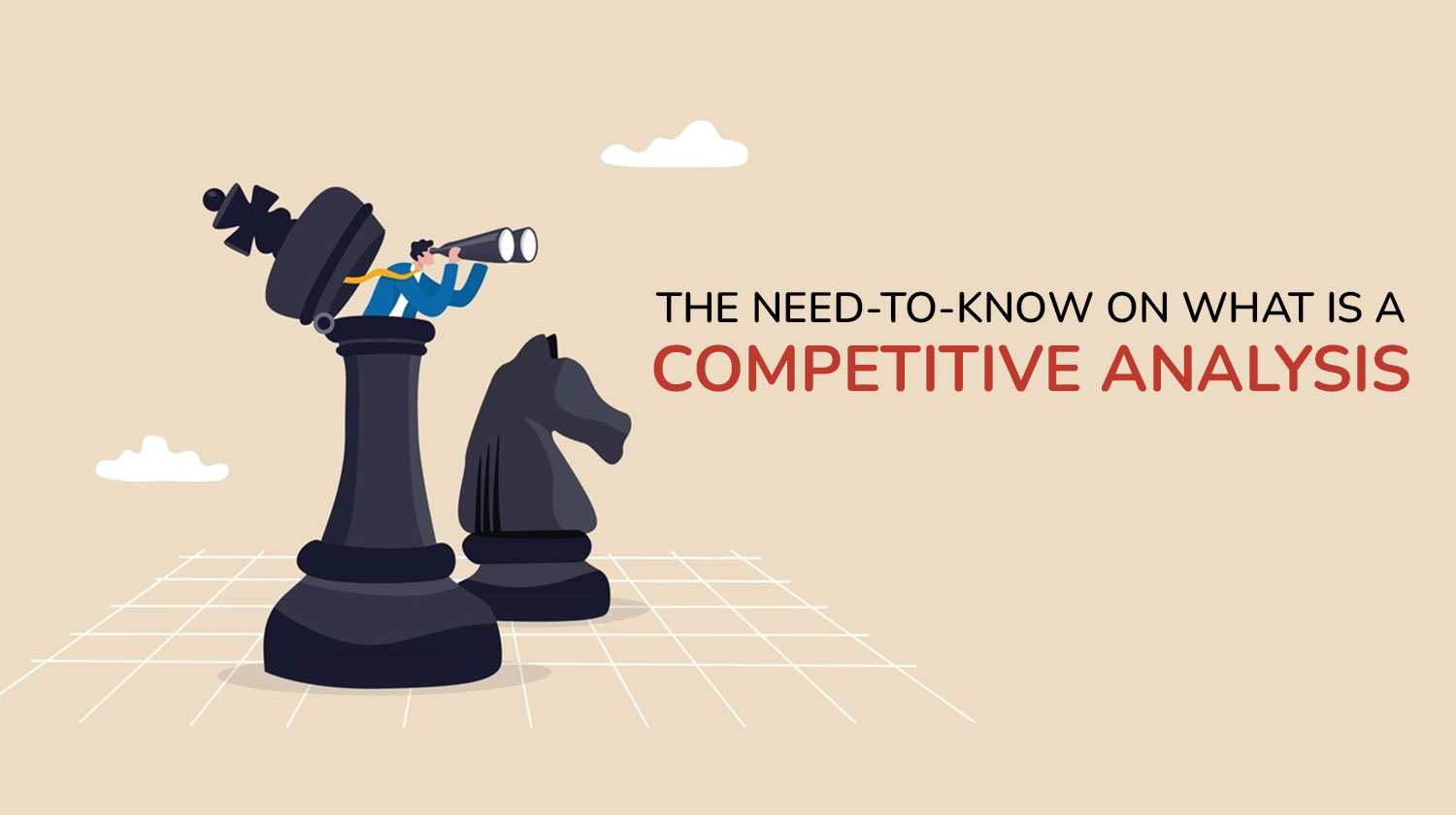
As a business owner, you need to know the ins and outs of your industry. This is where competitive analysis comes in.
Competitive analysis is an in-depth look into what your competition is doing and how they’re doing it. It takes into account how their strategies, products and services may affect your own. By clearly understanding the competitive landscape, you can develop more effective plans to gain more market share and increase profitability.
In this article, we’ll cover what competitive analysis is, why it’s important, and how you can use it to stay one step ahead of the competition. We’ll also go over the key elements of a successful analysis, including how to identify competitors, analyze their strategies and create actionable insights for your own business strategy.
What Is Competitive Analysis?
Competitive analysis is an essential tool for businesses, both new and established, to understand their competition and effectively position themselves in the market. It’s a research process that examines the strengths and weaknesses of your competitors compared to your own product or services. This process helps to identify both direct and indirect competitors, their strategies, and any areas of opportunity that may exist.
Put simply, competitive analysis evaluates your competitor’s products, services, pricing models, target audiences, marketing tactics, advertising campaigns, market share size and other relevant factors. Ultimately, this analysis will provide you with a comprehensive overview of the advantages and disadvantages of each competitor, including your own business, so you can make more informed decisions about how to best position yourself in the marketplace.
The Goals of Competitive Analysis
Competitive analysis is a research tool used to gain insight into a company’s competitors and the market. The goal of competitive analysis is to identify the strengths and weaknesses of competitors in order to gain an edge over them in terms of market share, product offering, and customer service.
Competitive analysis helps businesses to:
· Assess their competitor’s strengths and weaknesses
· Understand the market dynamics
· Identify opportunities for growth and expansion
· Establish strategies for improving their offerings on the market
· Monitor trends in the industry
· Develop marketing campaigns geared towards customers’ needs.
Conducting Comprehensive Competitor Research
Competitive analysis is the process of understanding what a company’s competitors are doing, how they’re doing it, and what strategies they’re using to outperform you. Through conducting comprehensive competitor research, you can gain valuable insights into the strengths and weaknesses of your competitors and create a competitive advantage for your own business.
Here are key elements to consider when conducting competitive research:
1. Industry Landscape – Get an understanding of the industry as a whole by researching market size, trends, and projected growth rate. This will help you identify other players in the industry, who they are, and their respective market share.
2. Competitor Profiles – Analyze competitor’s marketing strategies, including pricing models, promotions, advertising campaigns and unique selling points (USPs).
3. Competitor Products/ Services – Analyze your competitor’s products or services in depth along with their features, benefits, pricing and distribution networks.
4. Customer Reviews – Examine customer reviews for competitor products or services to understand better user sentiment towards them as well as identify any areas of improvement for your own offerings.
Leveraging Competitive Information to Strategize
Businesses can use their competitor’s analysis strategies to uncover their weaknesses and capitalize on them. Leveraging competitive information is a great way to develop an effective business strategy. By doing so, you can gain insights into what your competitors are offering, how they’re structured, and how your own services or products can outshine them.
Here are a few things you should focus on when leveraging competitive information for your strategy:
1. Market Share: Researching competitor’s market share will give you an idea of what portion of the market your competition is capturing – giving you more insight into the strength of their brand. Knowing this information will be instrumental in helping you decide what products or services to invest in.
2. Product Features / Benefits: Find out what features and benefits your competition is offering and try to determine what kind of value they’re providing customers with. Then figure out ways to improve upon these features, so that your product or service stands out among the competition.
3. Pricing Strategy: Analyzing competitor’s pricing strategies can help you create a better pricing structure for your own business and give you insight into how much customers are willing to pay for similar services or products.
By taking the time to thoroughly research your competitors, you’ll be able to find unique opportunities that can be supplemented with a thoughtful strategic plan and budget structure – enabling businesses, both large and small, to get ahead in the competitive landscape.
In-Depth Analysis of the Competitive Performance
Competitive analysis dives deeper than just surface-level observations, to provide an in-depth look at the competition’s performance. It goes beyond analyzing a competitor’s market share and website traffic, to also include factors such as their brand perception, current products or services, and product pricing.
This kind of comprehensive analysis allows you to really understand what is working for the competition and why. With this information in hand, you can:
· Identify potential strengths and weaknesses of the competing businesses
· Uncover areas where you can gain an advantage
· Look for opportunities to expand your own offerings
· Assess risk associated with entering a certain market
Understanding all these elements will guide you in making informed decisions on how to optimize your operations and strategy. A well-done competitive analysis will provide invaluable insights into your industry and help identify new opportunities for growth.
Uncovering Opportunities Through Competitive Analysis
Competitive analysis can be a valuable tool for unearthing untapped opportunities for your business. By analyzing the strengths and weaknesses of your competitors, you can gain insight into potential areas where you can capitalize and gain an advantage.
At its core, competitive analysis is designed to compare the monetized value of your competitors’ features, services and benefits. Here are some key considerations when conducting competitive analysis:
Competitor Mapping
Using competitor mapping can be helpful in understanding your rivals’ market strategies, uncovering new opportunities and developing strategies to either compete or differentiate yourself from them. It helps to think of competitors not just in terms of their specifics (products/services they offer), but also in terms of their overall positioning within the market. What are their brand values? What is their target demographic? What resources do they have that you don’t?
Strategic Benchmarking
Strategic benchmarking is about comparing how you measure up against your competitors over time. When it comes to pricing, consider researching how prices vary across different geographic regions, or look at what discounts or promotional offers they may be offering customers. On the flip side, see what types of benefit packages they typically offer employees, what kind of technology they use, or how they go about marketing their products/services. This data can provide invaluable guidance in developing your own competitive strategies.
By taking this approach to analyzing your competitors, you can establish concrete goals for improvement and better understand the business landscape you’re competing in for maximum success.
Conclusion
In conclusion, a deep understanding of competitive analysis and how it works can help any business keep ahead of the competition. To remain competitive, businesses must have the right strategies in place that involve understanding the competition, market trends, and customer needs. Competitive analysis can be used to assess the strengths and weaknesses of a company’s competitors as well as how to better position the organization in the market and develop effective marketing strategies. It is essential to select the right metrics and research techniques to ensure a successful competitive analysis.








